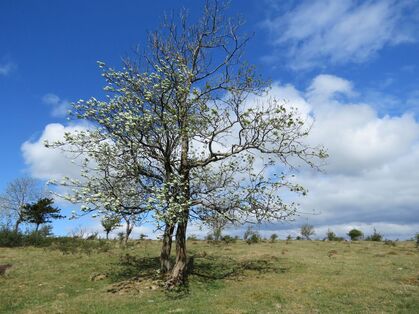 Whitebeam and Ash - two in one
Whitebeam and Ash - two in one Last night, the Prime Minister announces a new watch-word for Phase 2 of lock-down. 'Stay alert.' Scotland, Wales and Northern Ireland prefer the clarity of ' Stay at Home.' They do not want visitors. Nor does Cumbria, which has one of the highest infection rates in the UK.
To see cuckoo this morning, staying alert is the only way. Monday 11th May is cold and blustery. Gathering clouds cast darkness over the land, then the sun breaks through- so light is fitful. Difficult for bird watching.
Stay alert, and remember social-distancing. Through a loud wind I listen for his call. And I must take care not to disturb him. With lock-down and a glorious spring, there are people walking in zones seldom visited and it puts pressure on wildlife. In India, there are reports of turtles suddenly breeding in abundance on a beach which lock-down has made inaccessible. Wildlife needs social-distancing, its own protected space where mankind does not intrude. Cuckoo numbers have declined massively during my life-time, so it's always gratifying to know he has returned to Scout Scar to breed.
Once again, I make use of a stone wall to come closer to the cuckoo's call. I've barely time to take a couple of quick photographs before he flies. In my mind's- eye I retain an image: long, pointed wings and a swift low flight. He's still calling from the same area so I patrol the wall, to and fro listening- watching to see if I can spy him. He is loud and so close, hidden the other side of a leafy cluster of hawthorn.
Last night, Keir Starmer, leader of the Opposition, suggested Boris Johnson's announcement raised more questions than it answered. That's true of the cuckoo, which is what makes the bird so fascinating. I see the meadow pipit who senses he's a threat and tries to see him off. I've found him here every day for the last week. He's working this territory, seeking females (he's promiscuous). His lingering in the same territory gives me hope there are females about, but it's hard to know as they're rarely vocal and their call is different from his. One of my most exciting cuckoo sightings was here in Cumbria, I followed the call of a male, hid where two walls intersected and watched. He was up on the top-stones, so close I hardly dared breathe. Suddenly, he dipped down to the ground and mated with a female he'd been watching and I hadn't seen. Then the two of them flew up onto the wall and sat there for a while. I had seen cuckoo mating! Theirs is a brief encounter. Their parasitic habit entails no pair-bonding, no nest-building, no rearing.
Of course I hope for better images than today's. But they're all part of the story, of my personal cuckoo archive, images and images of my mind's-eye, memories.
Enter 'cuckoo' in search, top right of page, for more images, more encounters with cuckoo.
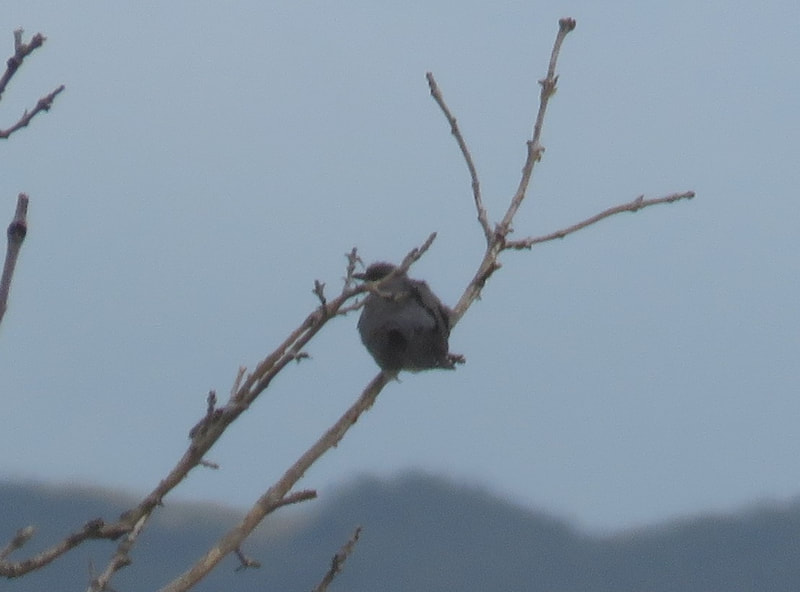
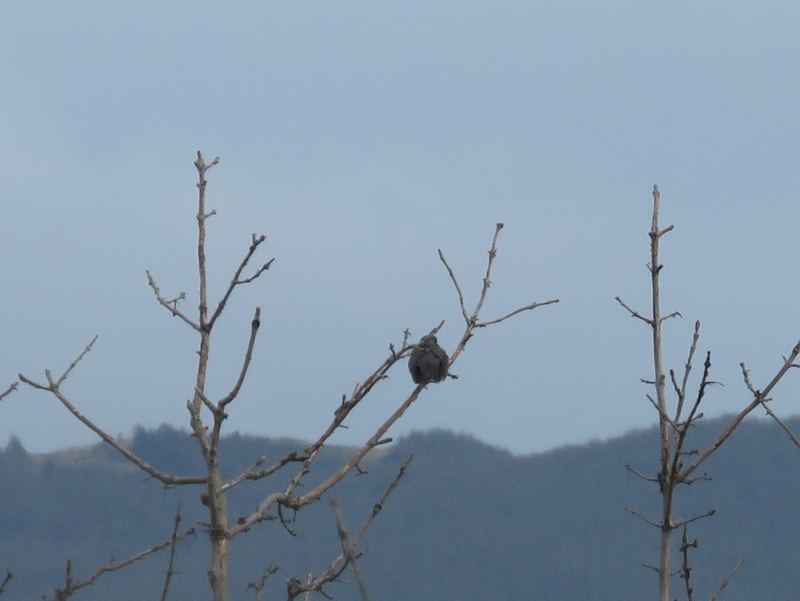
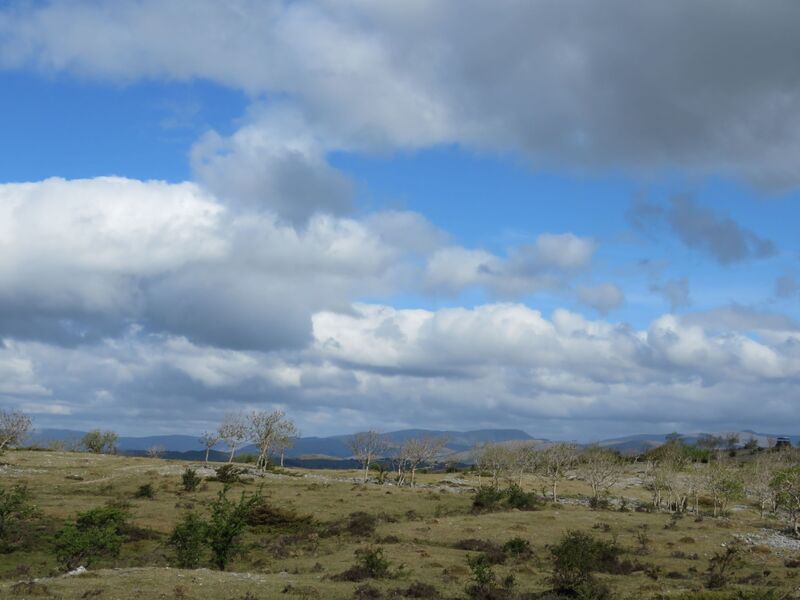
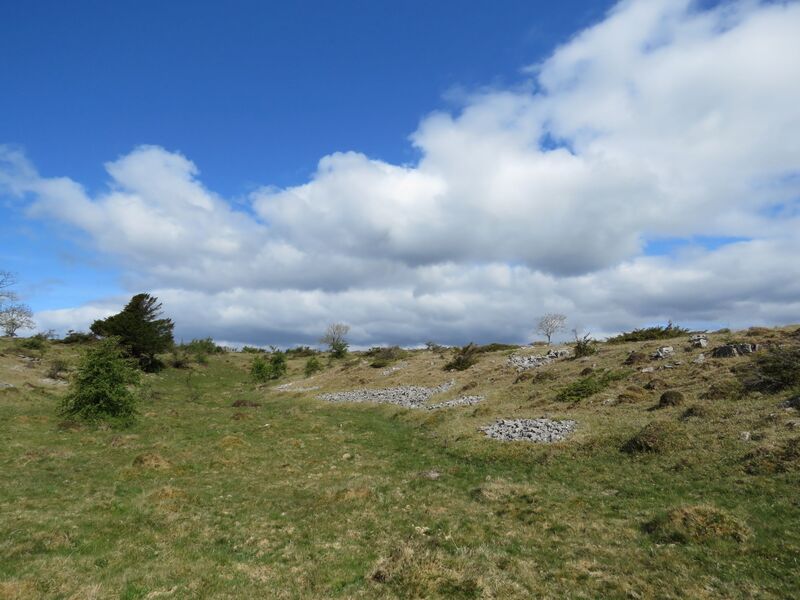
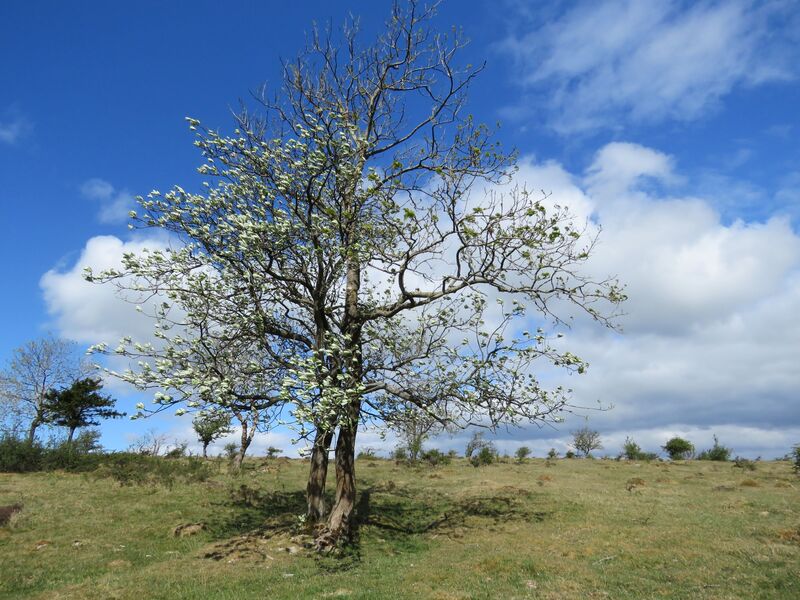
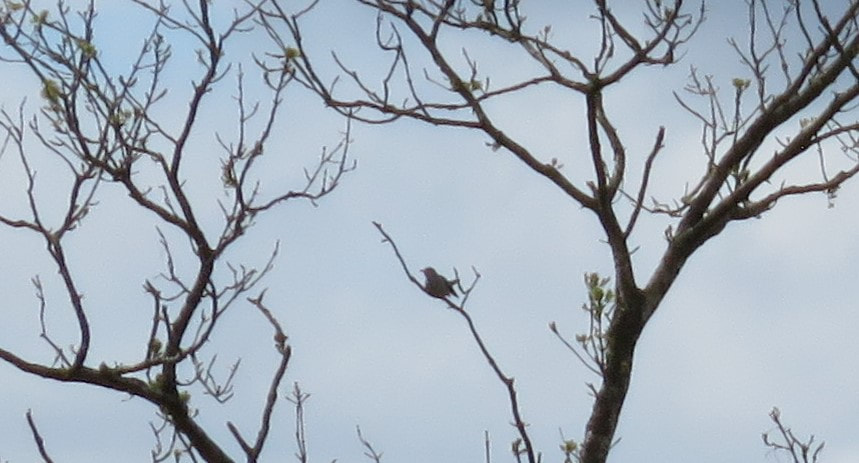
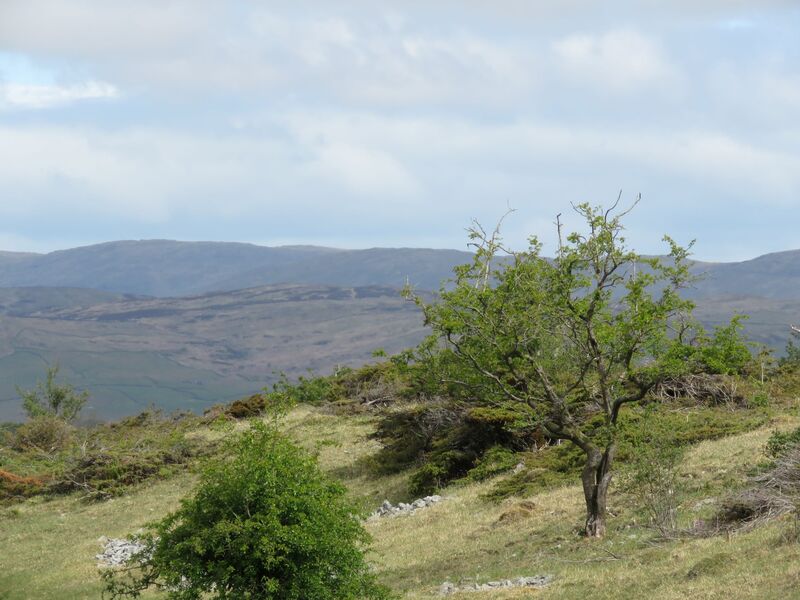
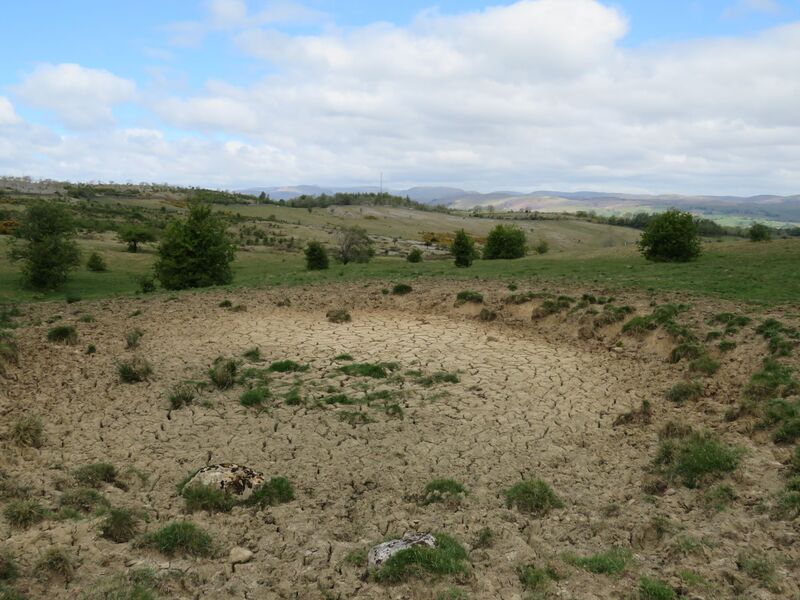
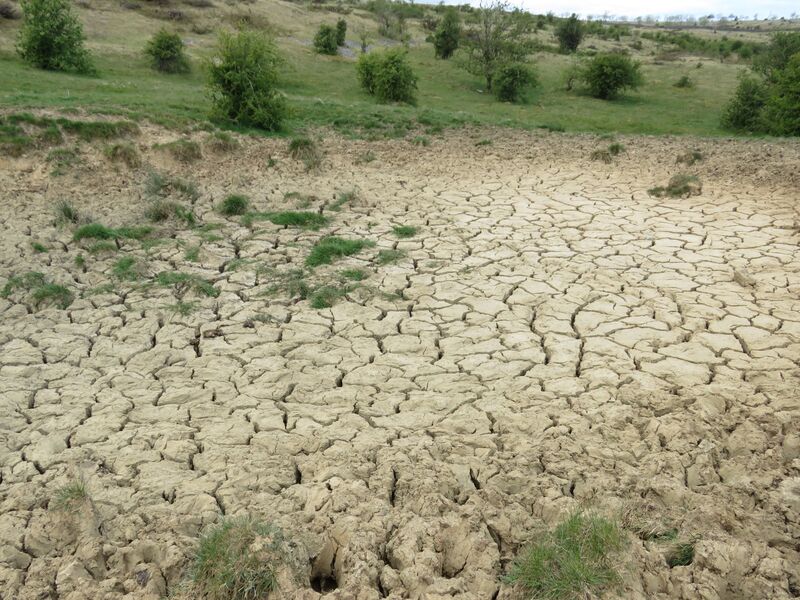
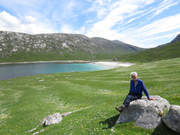
 RSS Feed
RSS Feed